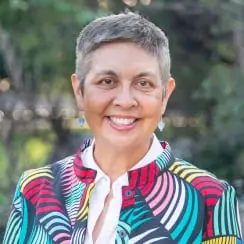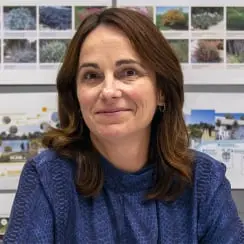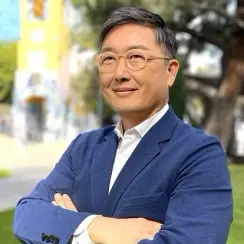 | 1.5 LU | HSW |
 | 1.5 LU | HSW |
Date / Time: October 30, 2025 | 10:45 am – 12:15 pm
Room: 164-165
Audience: Architects, Engineers, Educators, Facility Personnel, Contractors / Suppliers / Manufacturers, Consultants
Call to Action:
Abstract: As school districts develop outdoor learning environments and green schoolyards, design teams are looking to landscape architects to take the lead in developing learning environments. What better advocates for nature-based learning than professionals that chose to work with nature as their life’s work? How does the built environment inform the learning that happens outdoors on a school campus? How do we support outdoor learning by providing an environment that acts as a springboard for nature-based learning? Through the design and layout of the playground, the selection of plants and trees, incorporation of locally available rocks and hardscape materials, and design for water conservation and stormwater mitigation, the outdoor built environment can enhance and support the growth of nature-based learning at our schools. Using storytelling, landscape design inspires students to engage in nature-based learning experience in their schoolyard. Landscape storytelling can be narrative, based on a children’s story or fable; it can tell a natural habitat story; or it can be a story of the cultural, geologic, or ecological history of a place. Utilizing storytelling not only engages and draws students to the outdoors but also makes the outdoor learning environments accessible to teachers. Los Angeles Unified is working towards the goal of 30% green and natural school yards at all school sites. This massive undertaking requires working with landscape architects and architects across the region at multiple sites, developing metrics and standards for measuring and tracking progress toward the goal, updating and developing standards for facilities and maintenance, and all in support of nature-based learning.
Panelists include a representative of Los Angeles Unified and two landscape architects who have been working on projects with the District for many years to develop green schoolyards. Utilizing case studies of built and planned projects, the panel will share stories of the transformation of urban campuses to connect our students to nature. The presenters will engage participants in group activities exploring outdoor learning opportunities and creative storytelling methodologies utilized in the design and planning process. Pictures, poems, quotes, and experiences may be used to generate energy, enthusiasm and vision for a learning environment. “A circle of 6-foot pines is a forest to young children.” Mary Rivkin, University of Maryland, from Last Child in the Woods, by Richard Louv.
Learning Objectives:
Design of Educational Facilities
Aligning Educational, & Community vision with design to support a regenerative mindset for a sustainable and future ready Educational Facility.

Julia has been working for school districts for over 20 years to positively impact the learning experiences of the students she serves. She manages the planning of major projects transforming existing school sites and leads the effort to develop, update and align LAUSD’s design standards and educational specifications with its instructional vision. In her professional and personal efforts, Julia advocates for inspiring learning environments that provide all children the opportunity to learn, grow, and dream.

Jennifer is an award-winning landscape architect who leverages over two decades of experience to produce innovative design solutions. Jennifer is constantly engaged by the variety of challenges she encounters and the new solutions she helps to devise. She is committed to finding ways to increase biodiversity in urban areas, understanding that human health and the health of the environment are vitally interconnected.

Hongjoo, founding Principal and Design Director of HKLA, is a highly accomplished landscape architect with over 28 years of experience. He holds master’s degrees from Harvard University and the University of Colorado Denver and is licensed in California, Oregon, and Idaho. Hongjoo is dedicated to integrating sustainability, technology, and cultural needs into his designs. His diverse portfolio spans K-12 schools, universities, municipal buildings, and public spaces, emphasizing resilience, landscape art, and community impact. His work shapes meaningful and enduring environments.